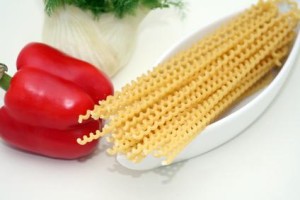It’s getting to be the time of year that I start trying to stock up on produce items that will last us through the winter. I like to say I am being like a chipmunk.
This first thing to consider when you are planning on your fresh produce storage is to decide what foods you will use. Potatoes, onions and winter squash are soon going to be in abundance.
Storing food in small amounts is easy, but in larger quantities it can be tricky in our increasingly energy efficient homes. Small amounts of things that like it moist like greens, roots, and tubers can be stored in the refrigerator, and things that like it drier like onions, garlic, and winter squash can be stored on the counter top. When trying to determine the right place in your home to store a box or boxes of produce, a good place to start is by monitoring temperatures in your home. Get a bunch of thermometers and place them in closets, hallways, and the places that are generally dark and have mostly even temperatures. Chart those temperatures through a winter before you get too serious about storing food.
We buy 100 lbs of potatoes from Idaho every year and ususally 30 pounds of onions. I have a shed in my yard where I store these items. I have a 50 gallon barrell that I layer potatoes and saw dust in. I also wrap and old blanket around the barrel. I rarley have problems with anything going rotten or freezing when I store it this way. We just keep the barrel in the center of the shed.
In my storage room downstairs I have some wood shelves and I stores a few winter squashes there! Sweet Meat or Hubbard are my favorite winter squash varieties. I get 3-4 of each and they last a couple of months in a cold dark place. Pie pumpkins store pretty good too. Try to keep the storage temperature even, fluctuating temperatures will encourage rotting. Squash that have thinner skin do not store as well. When properly cured, most varieties of winter squash will last through the winter. Proper curing means the water content was just right at harvest and they were set in a sunny and dry place for 7 to 10 days just after harvest. If you are buying them locally you can find out if they were cured well for storage. Or you can chance it and check them often for bruising.
Make sure you ignore your stored produce. You do need to check it often for rotting and bruising. Quickly remove any rotting items and you should be able to minimize the damage.






